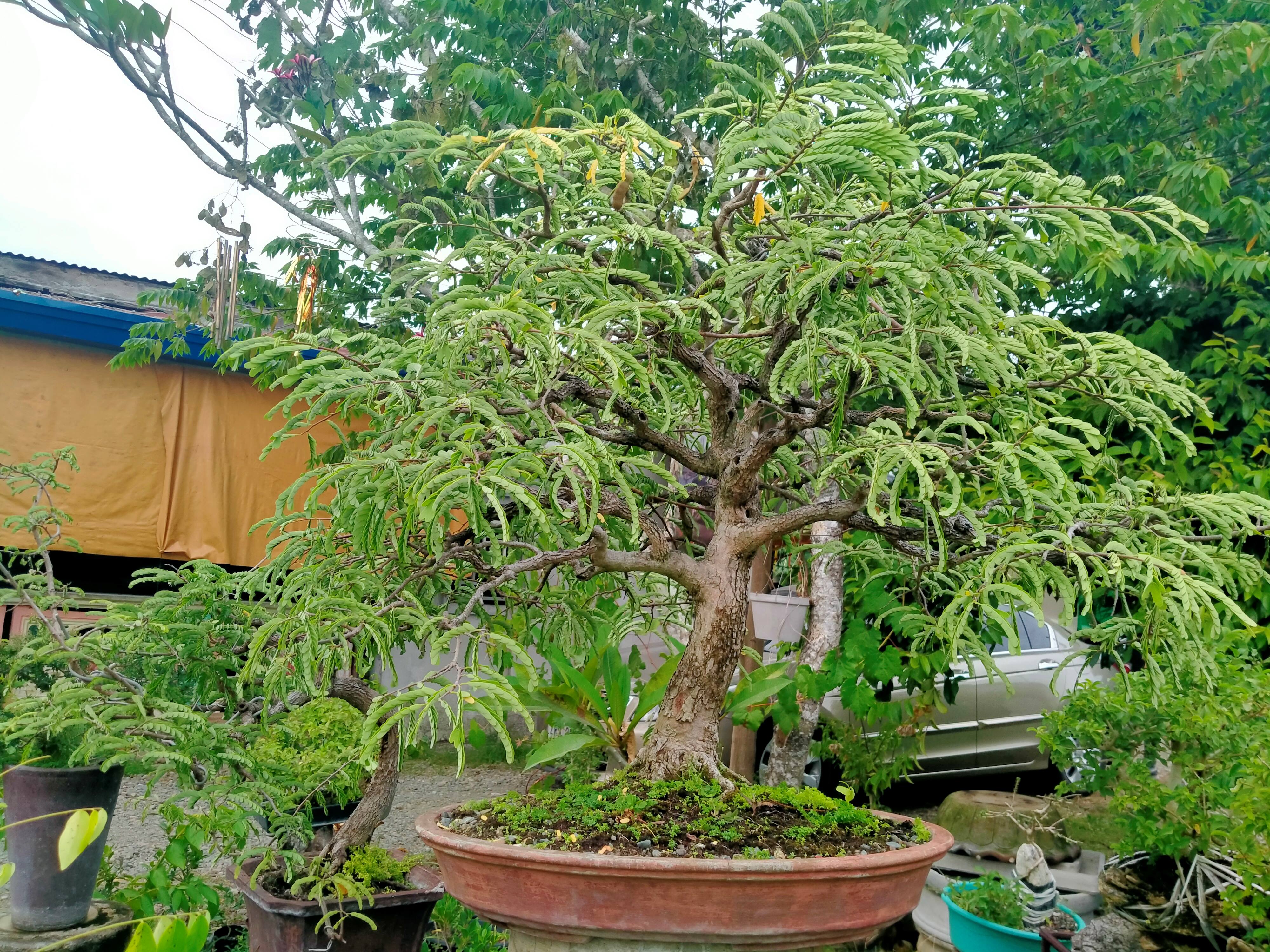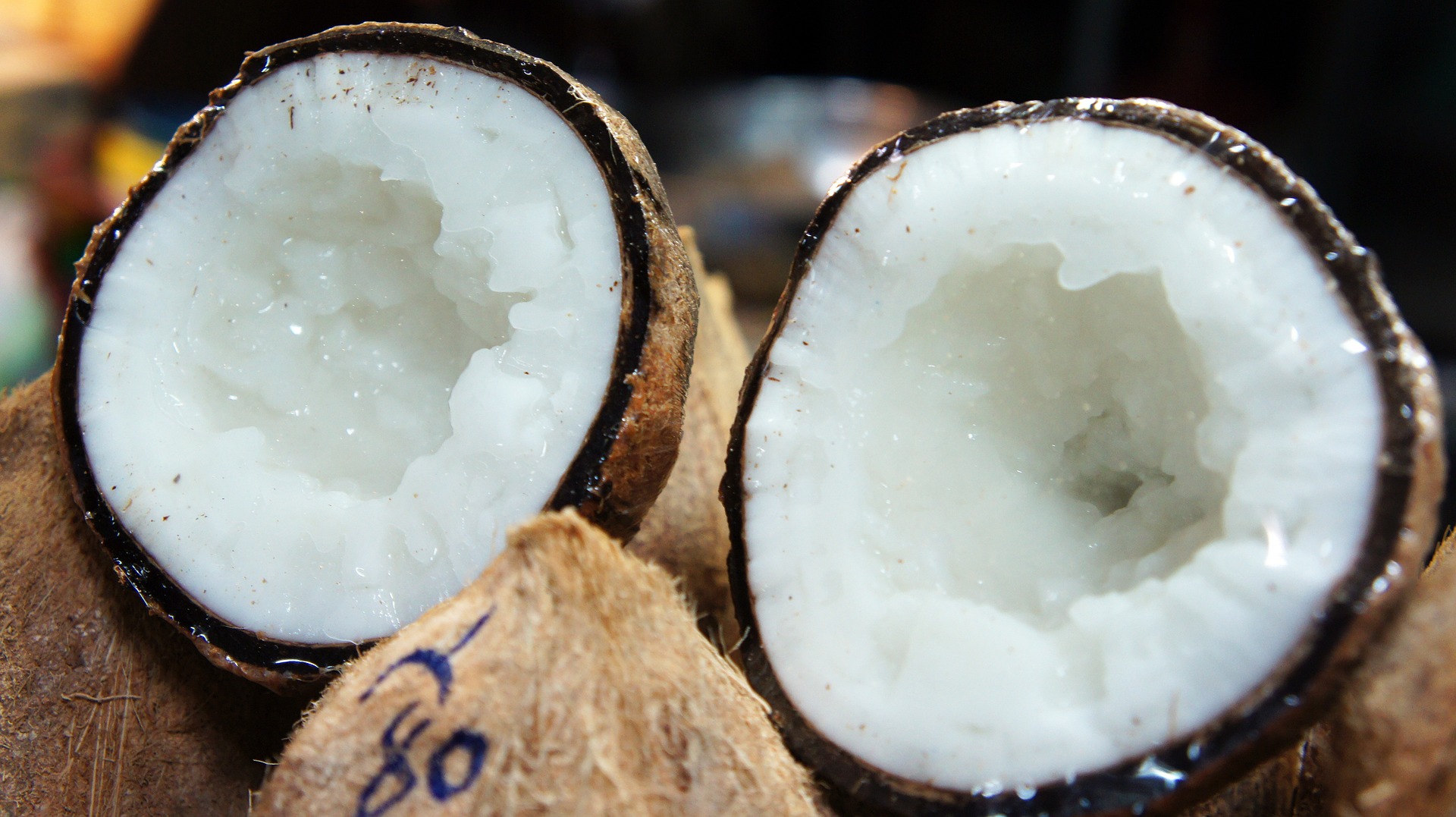The beauty of art is that it can survive beyond its maker. Whether it be paintings, songs, architecture, or stories, art is made to be a legacy left in the world.
Bonsai can be considered an art form rooted in agriculture. It’s the art of growing miniature trees in containers or pots, and training them to grow in a shape that the artist desires. Regular trees typically live long lives, so it’s safe to say that bonsai can uphold its beauty for years even beyond its maker.
Anthony Angeles has been a bonsai artist for almost four decades. His interest in bonsai started when he was a teenager where he had been caroling with a group in Cavite. One of the houses had a bonsai displayed in their front yard.

Anthony Angeles has been a bonsai hobbyist for almost 40 years and now owns almost a thousand bonsai. (Jazz Quiambao)
"So I saw a bonsai at the center of their lawn and it even had a spotlight,” Angeles said in Tagalog. “So I asked my professor, “What kind of tree is that?” and he said it was a bonsai.”
Angeles was intrigued. By that time, Angeles was already a gardener for ornamental plants, but the encounter sparked something in him. He looked for books about bonsai and studied them relentlessly. Despite only learning from books, Angeles wasn’t afraid to put his newfound interest to the test and he started caring for a sampaloc (tamarind) bonsai.
Angeles also tried to explore bonsai shops. At one point, he went to the Manila Seedling Bank to acquire seeds and learn more about bonsai. “But it was like they didn’t appreciate questions. They just wanted you to follow, to look,” he said. “But they kept saying it was hard, it takes long, and there are a lot of processes.”
He did not take those words to heart. For the next few years, Angeles dived into bonsai-growing without any mentorship. It was a journey of trial and error, and Angeles learned a lot as he cared for different species of bonsai. “In the [first] five years of doing bonsai, I, more or less, learned the attitude of each tree I had,” he said.
At some point after, Angeles became an assistant to another bonsai hobbyist who is considered a veteran in the field. With this opportunity, Angeles was able to go beyond books and experiments, and he was able to gain hands-on experience from assisting an experienced bonsai artist. He also finally took the initiative to attend seminars and shows centered around bonsai cultivation.
The key to longevity
Angeles' first ever bonsai, a native sampaloc tree, is alive and healthy until today.

A native sampaloc bonsai. This bonsai bore many sampaloc, but Angeles had to remove them because too much fruit could drain the bonsai’s energy. (Jazz Quiambao)
From one bonsai that he started almost forty years ago, Angeles grew his collection to almost a thousand plants that consist of a wide variety of species. All of his bonsai are displayed and cared for in a 4000 sqm area in Baliuag, Bulacan. “I’m creating a forest,” he said.
“[When caring for bonsai], you forget your age. You lose track of time,” Angeles said, adding that the joy of caring for bonsai is anticipating the beauty it will become.
Everyday, Angeles waters his bonsai and fertilizes them every week. He emphasizes that fertilization is important, especially since bonsai literally means “trees in a pot.” Being in a pot limits the nutrients a tree requires. Without fertilization, the bonsai will survive, but will look sick.
The soil used in his bonsai is river sand, to which he adds a small amount of vermicast. He doesn’t recommend other kinds of sand, especially fine sand, because it can clog, not allowing water to seep through and instead may flood the plant.
Once or twice a year, the little trees need to be defoliated. “When you defoliage (sic), it isn’t just leaves that would grow back, branches too,” Angeles said. “So the more you defoliage, the more the branches would grow and its leaves would become smaller.”
Bonsais also need to be repotted once a year, but Angeles says the most difficult thing about it is the wrong timing. Each bonsai responds differently, and a wrong move can cause it to die. Angeles emphasizes the importance of learning each tree’s attitude.

With his growing collection, Angeles wants to create his own forest of bonsai. (Jazz Quiambao)
For Angeles, the easiest bonsai to care for are ones with small leaves. The ones that are challenging are kamagong and bantigue because the care and materials they require are costly and labor-intensive.
“The bantigue is the best tree, so far, that could compete internationally,” Angeles said. “They cost a million.”
Bonsai enthusiasts are known to be hunters. They hunt for materials unique to different regions or areas in order to grow them in pots. Angeles used to be one of them, but he is now against the practice.
“I abhor the idea of hunting,” he said. “What I teach is propagation. You can enjoy it more, you can bend the tree more while it is young. You can do everything you want if your material is young.”
The practice of material hunting is especially alarming when hunters take endangered species just to use it as material for bonsai. Hunting particularly rare species, such as the bantigue, can be punishable by law. The bantigue is classified by the Department of Environment and Natural Resources (DENR) as “endangered” according to DENR Order 2017-11, and can only be collected from the wild for scientific purposes.
This is why Angeles believes that hobbyists, especially the one with rare plants, should instead propagate them and share them with others. This can slow down, and hopefully discourage, bonsai material hunting.
Booming bonsai business
Angeles’ care for his bonsai is driven by passion, but it does generate good income for his needs.
“We have mame, which means small bonsai or tiny bonsai that are three inches, they range from 1,000 to 10,000 [pesos],” he said. “The bigger ones range from 20 to 50,000 [pesos].”
The price of a bonsai can heavily depend on the award it gains from competitions and shows. There’s a lot of factors affecting how a bonsai can be priced, such as its rarity, aesthetic, care, and prestige it gains from the community.
Angeles used to attend shows and even enter competitions, but he said that he stopped because of issues stirred by such events.
Thanks to social media, customers from all over the country reach out to him to buy a bonsai. While some are able to pick up the plant from his garden, some of his clients come from Cebu or Davao, which means Angeles has to take extra care packaging the bonsai.

A collection of tugas bato bonsai. (Jazz Quiambao)
"For me, bonsai is my passion. I want to care for a lot of them. I want a lot of people to appreciate them,” he said. “But it does become a business.”
Angeles used to earn P5,000 a day selling bonsai, and there was one time when he was able to earn P100,000.
However, as of now, Angeles’ bonsai business is closed. He moved to Baliuag, Bulacan from Pila, Laguna, which is why it’s still taking him time to re-establish his business at the new location.
Deeply rooted love
As previously mentioned, Angeles’ bonsai forest is now located at Baliuag. However, his bonsai have been traveling a lot for the past ten years.
Angeles and his bonsai have travelled from San Fernando, Pampanga to Mt. Arayat to Pila, Laguna, and then finally to Baliuag.
“That’s really one of my best stories,” Angeles said. “You know, it really feels like I lose my child when I leave a bonsai.”
Angeles has a two hectare land on Mt. Arayat where he once set up his bonsai forest. But because he had to relocate to Laguna for an indefinite amount of time, he wanted to bring his bonsai with him.
Moving them wasn’t easy. The road going up and down the mountain was muddy and narrow, and Angeles didn’t have a way to bring a large vehicle to haul his bonsai down the mountain. He resorted to using his motorbike repeatedly just to transport his plants.
After staying in Laguna for a few years, Angeles was ready to move to Baliuag. Thankfully, this time, a relative lent him a truck for transport. But the move was still difficult.
“It really hurts when I can’t bring them,” Angeles said. At times when he couldn’t bring all his bonsai, he opted to give some of them away, “But as a hobbyist, you could feel the plants’ sadness when you can’t care for them.”

Banyan, or tiger bark, bonsai. Despite many location changes, Angeles is determined to always bring this, and his other bonsai, with him. (Jazz Quiambao)
Steward of the world
Bonsai art isn’t just a hobby. For Angeles, bonsai enthusiasts serve a noble purpose in preserving the species of trees in the Philippines.
“As long as you do bonsai, you are a lover of nature. A lot of people assume that bonsai enthusiasts hurt nature, but those are the hunters,” he said. “There may be species that would become lost from the mountains, but a bonsai enthusiast will have it.”
As trees, bonsai is certain to outlive their caretakers, which is why Angeles is making sure that his bonsai will be inherited or given by someone who can truly care for them.
“They have to be inherited. My students can inherit them or my children, but of course what matters is that they have space,” he said. “My last option is to donate [the bonsai] to central state universities or agricultural schools where they can be cared for.”
“Let’s admit, it’s not like you can live for another 100 years to take care of the bonsai. And even if you did, you definitely wouldn’t be able to carry a five-kilo bonsai,” he said.
Angeles believes that caring for bonsai is a responsibility.
“As you get older, you will realize that you are a steward,” he said. “You are not just a hobbyist but you are a steward of the earth.”
Photos courtesy of Jazz Quiambao



















